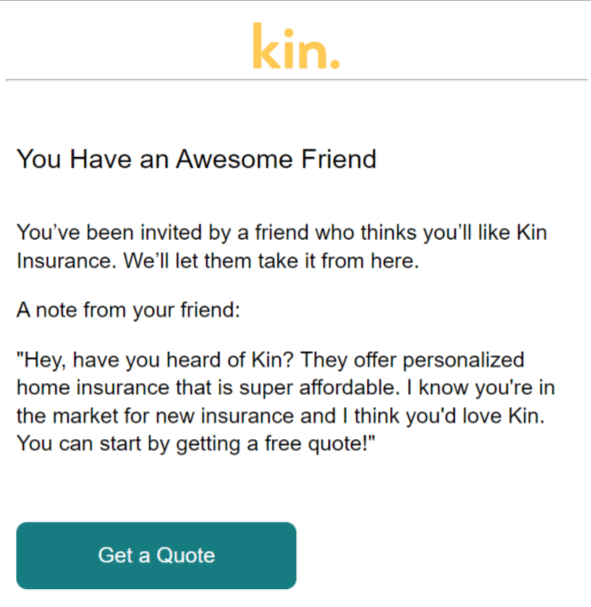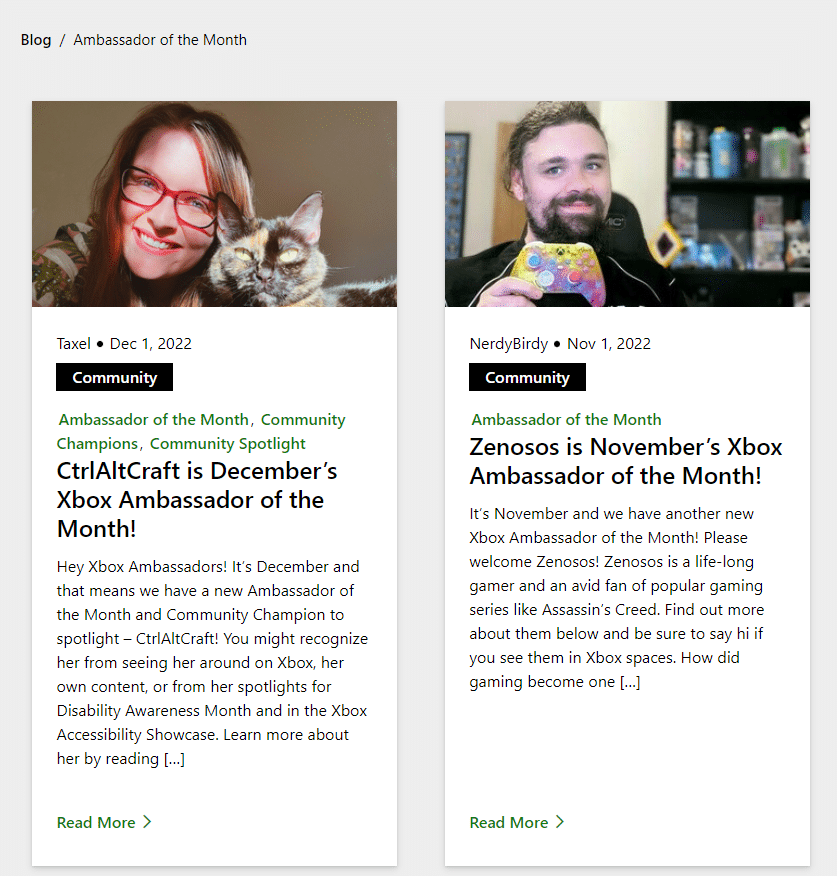Referral programs are a powerful marketing tool for growing your business. They mobilize your existing audience – your customers, clients, users, or readers – to share your product with others. Usually, referral programs motivate this sharing by offering a reward. But what if offering rewards doesn’t make sense for your business, or what if your business can’t offer rewards?
Here’s how to make a referral program work without rewards. First, though, let’s go over when it makes sense to go reward-free, so you can determine whether this approach is best for your business.
If you’ve already decided to run a reward-free referral program, jump to the best practices below.
Pros and cons of running a referral program without rewards
Is it worth starting a referral program without rewards? Weigh the advantages and disadvantages below:
Advantages of reward-free referral programs:
- Starting a referral program – even without rewards – makes clients’ sharing trackable.
- Starting a referral program without incentives is a great way to benchmark your initial sharing rate and conversion rate.
- You’ll enjoy the benefits of the trust people put in their peers, with or without a reward:
- 92% of people trust their peers’ recommendations more than any other form of advertising.
- Referred friends are more likely to start – and continue – using your product or service
- Non-incentivized referrals are the most genuine form of recommendation; they mean that clients are genuinely sharing your product or service because they love it and want others to have the same experience.
- Referral programs are already cost-effective; programs without rewards are even more so.
Disadvantages of reward-free referral programs:
- Even if a customer loves your brand and says they will refer others, it might not happen. The majority of customers lack motivation to refer without an incentive in play.
- If the customer has to go out of their way to refer, the chances of them referring are especially slim when there’s no reward.
- You’re less likely to start a continued sharing engine: continued rewards are one main reason people will keep sharing a business via referral programs
When to create a referral program without rewards?
In most cases, you’ll want to include rewards in your referral program, as rewards act as an added motivator to encourage sharing. However, there are some situations where running a referral program without rewards makes sense:
- Your main product or service is free, so it doesn’t make sense to pay for referrals – say, you offer a free newsletter or online tool
- You are a new or small business, and currently don’t have the budget to offer rewards
- You’re a luxury or “aspirational” brand – tangible referral rewards don’t always make sense for high-end brands, as there’s often a fear that rewards could “cheapen” the experience
- You are starting your first program and want to test the waters – starting your program without rewards can help you see how willing people are to refer before you implement rewards later
- Federal, state, or local regulations prohibit your industry from offering a referral reward
- Your business type’s code of ethics prohibits or discourages referral incentives – say, you’re in healthcare or dentistry
If your business doesn’t fit the situations above, visit our guide to referral rewards and incentives to learn about the benefits of offering incentives. But if your business wants or needs to run a program without rewards, read on for our tips and best practices.
Referral programs without rewards: Best practices
How to run a referral program without rewards? These best practices will help you run one successfully.
Focus on the customer experience
If you want to start a referral program without rewards, you’ll need to prioritize making your overall experience so positive that word of mouth will happen naturally. After all, your product or service itself will be the reason people want to share your brand – this is true in every referral program, but especially one that’s incentive-free.
Be sure that your product meets your audience’s needs, and that your customer experience exceeds that of competitors. You’ll need these foundations of product and service in place before you start or refine a referral program. You’ll also need to ensure that you can keep delivering on these pillars even when your client base increases.
If your audience is already sharing your product or service, or leaving positive reviews, that’s a good sign that you’ve built the foundations of a successful referral program.
Play up the intrinsic incentives
Even though you won’t offer tangible rewards in your referral program, there are still plenty of intrinsic incentives to referring that your customers can benefit from. It’s vital to play up those motivators in your messaging, so your customers understand the importance of referring.
Show how referring helps the customer’s friend:
- Does your product solve a problem they have?
- Will the friend enjoy a superior experience compared to competitors in your space?
- What aspects of your product, service, or customer experience stand out the most, that the friend will especially benefit from?
Use imagery and text that focuses on friendship and community:
- Demonstrate how sharing strengthens relationships with friends
- Display images that show friends together
Show how referring helps your mission spread:
- Is your mission helping others stay healthy, enhancing a presentation design experience, or something else? Make that mission clear in your messaging.
- Your best customers will want to help you grow even without a reward, but you’ll need to remind them why they should share.
Make sharing easy
Especially when you don’t have rewards, you need your referral program to be streamlined and easy-to-use to drive sharing. If the program isn’t simple to use, your customers will either share independently (making the referral impossible to track) or not share at all.
Here’s how to optimize the sharing experience:
- Be sure customers can find and share the program in as few clicks or taps as possible
- Make the program simple to understand
- Explain the program in a few simple steps
- Make your program page uncluttered, with plenty of white space
- Create a clear call to action button that’s easy to find, that says what the customer should do (“refer” or “share now”) and that customers don’t have to scroll to find
- Offer several sharing options, based on how people usually share info with friends
- Usually, this will include email and specific social media platforms
- You might also include an SMS option
- Give members a referral link to copy and paste anywhere
- Make sure your program is easy to use on mobile, as that’s how people naturally share things they love with friends
Promote your program extensively
People need to know about your program for it to generate new clients. Promotion is especially important when you don’t have rewards to build momentum, as you want customers to share your business in the most trackable way.
So, be sure to promote your program:
- On your website (place a hero image or banner where it’s easy to find, and/or buttons in the top and bottom menus)
- In personal referral emails sent to your most satisfied customers
- In mass emails focused on your program, sent to all customers in 3-month or 6-month intervals
- In news/update emails, confirmation emails, invoices, and other emails unrelated to your referral program
- Through social media posts
- In email signatures and social media bios
Give the referred friend a personal note from the referrer
The message the referred friend receives through your program is often their first impression of your business. It’s especially important if the friend isn’t offered a reward for becoming a new customer – your unique selling point and your advocate’s recommendation are the factors that will determine whether a referred friend becomes a new customer.
Ideally, the message should be written by the referrer, and explain why the referrer is recommending you to their peer. But you can also prompt the referrer with ideas to include in the message, or even include an editable message as a starting point that they could send as is. This will make the sending process easier for the advocate, and help make sure your unique selling points and benefits come through in the message. If you write this sample message, be sure it sounds like it’s coming from the peer’s perspective, and doesn’t seem “salesy.”
Send thank you notes for referrals
It’s vital to show customers how much you appreciate their referrals. When they feel appreciated, this will encourage them to keep sharing. Even without traditional incentives and gifts, there’s one “reward” that doesn’t cost a thing – a thank you note.
How much you personalize the note is up to you. You could write a handwritten note or send one via email. And you could include personal details specific to your relationship with the customer, or send a similar note to all customers, with just a few tweaks made at different times throughout the year to keep things fresh. Regardless of the options you choose, be sure to include the customer’s name and show genuine appreciation for the referral.
Another way to say thank you is to make it public – shout out customers on social media, your website, or your blog to thank them for sending new customers your way. You might choose to reserve this public thank you for your top advocates.
Track your referrals with software
You’ll need to set, and track progress towards, measurable customer acquisition goals to see if your referral program is returning the desired results. It’s nearly impossible for you to do this manually.
Referral software is vital because it streamlines your program creation process and makes tracking and managing referrals easier.
- Lets you create a customized referral experience, tailored to your brand
- Tracks exactly where every referral came from, thanks to unique referral links for each client
- Can instantly trigger thank you emails for successful referrals, if you go the automated thank you route
- Keeps customers engaged with your program by auto-sending participation reminders
- Collects program data, so you can easily measure success and refine your program
Wrapping up
Although going reward-free won’t work for every situation, it’s certainly worth starting a referral program without rewards if you fit in one of the categories we discussed above. Follow the best practices above to set your program up for success. Be sure to focus on the customer experience, as that’s the factor that will drive your customers to recommend you. And when referrals start rolling in, show your appreciation with a thank you note.







